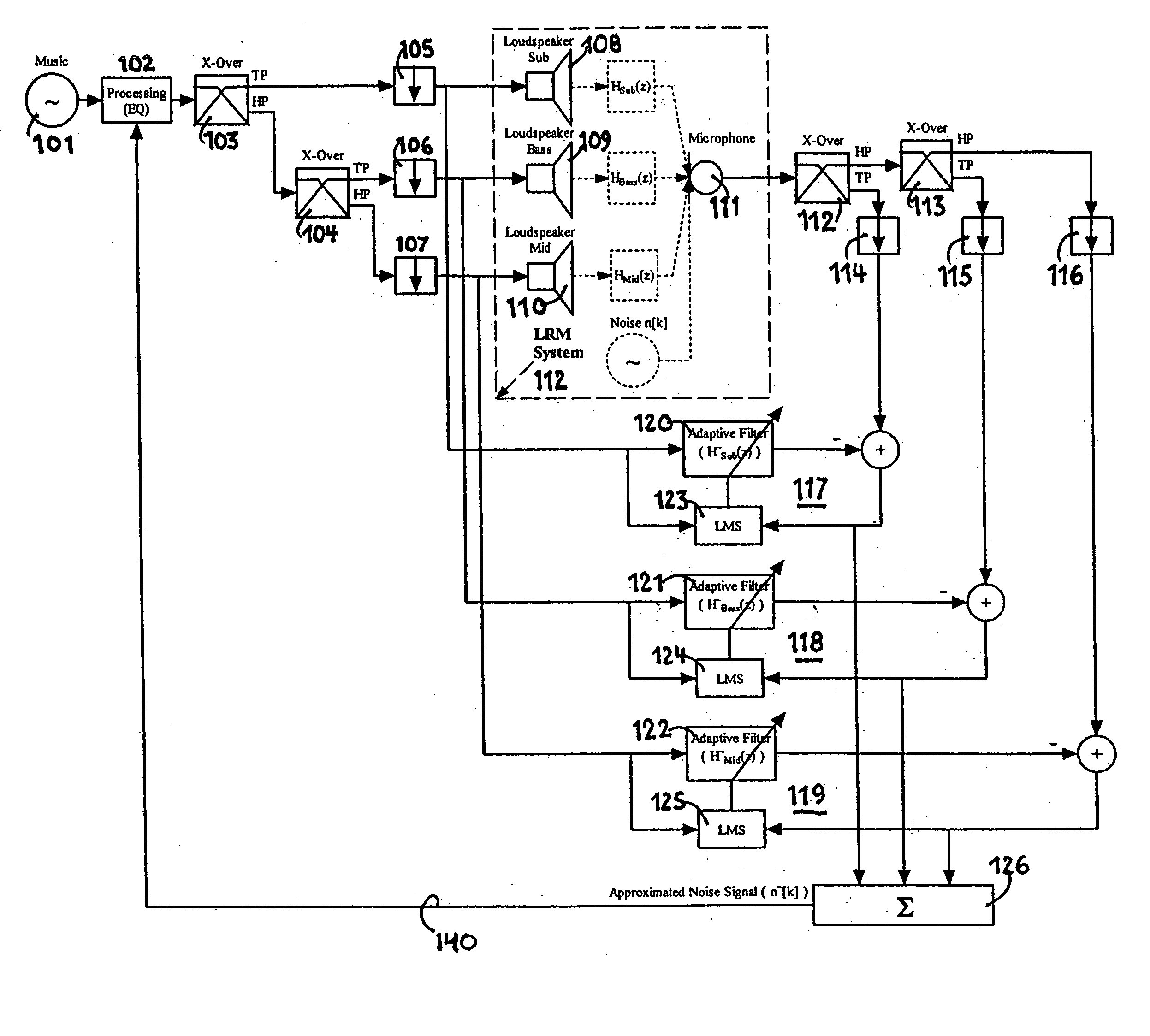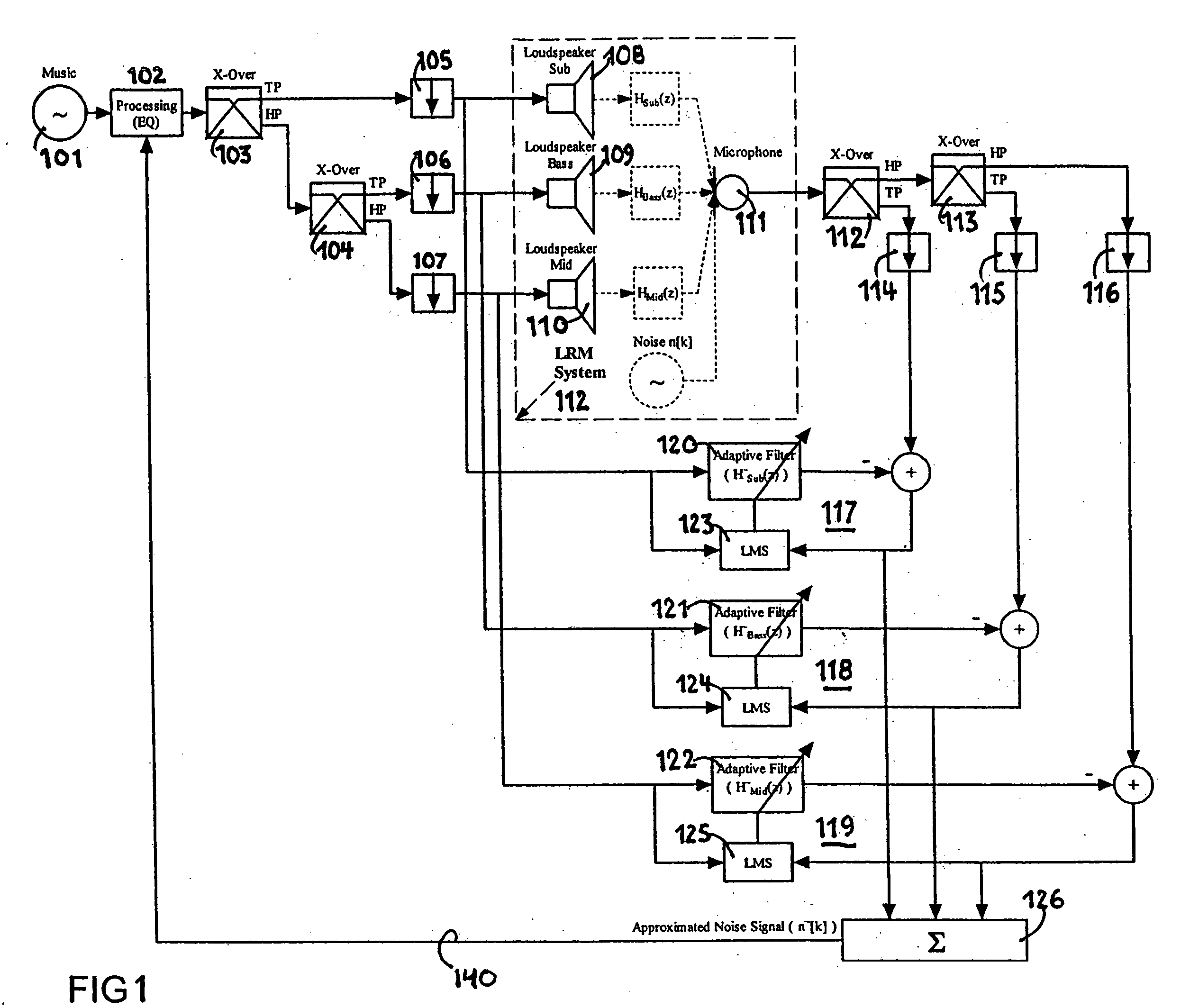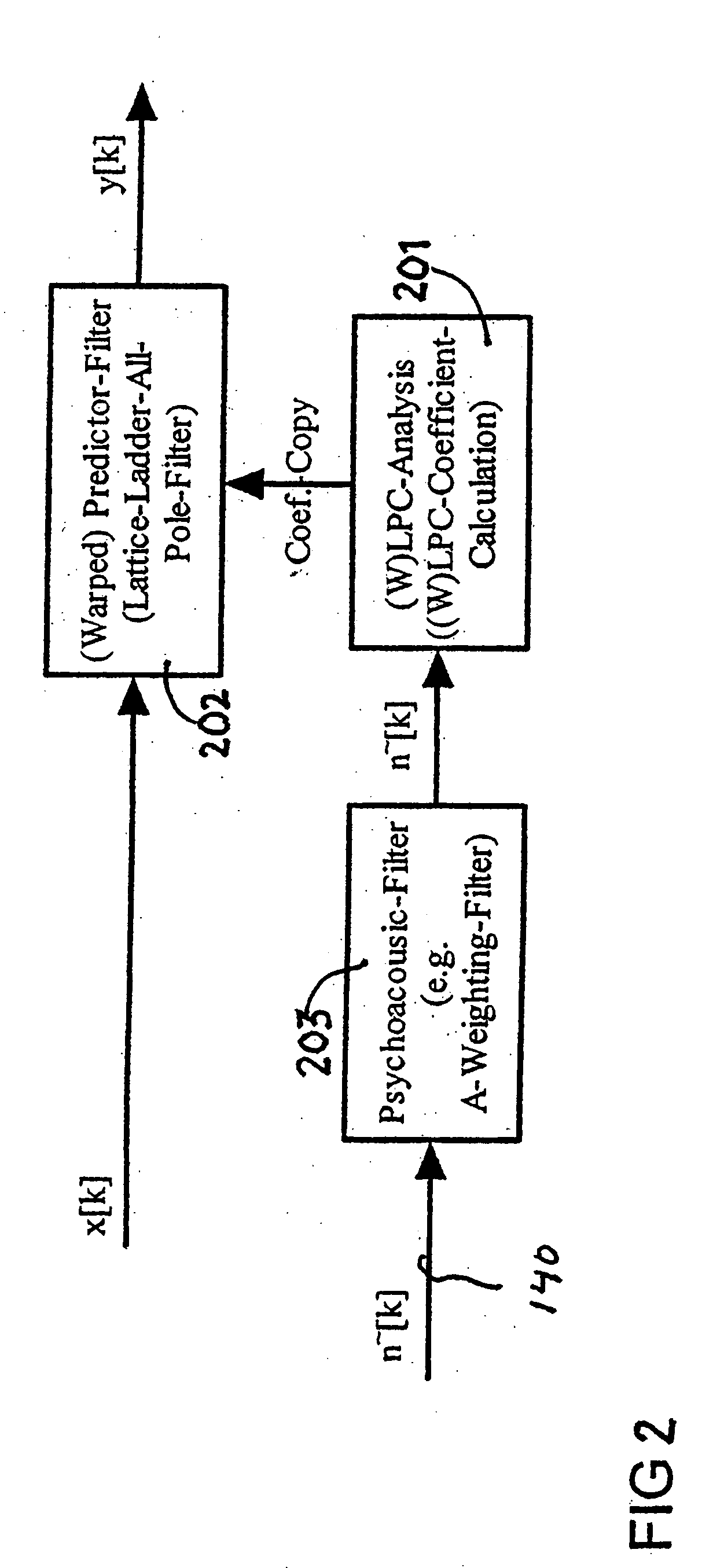Audio enhancement system and method
a technology of enhancement system and enhancement method, applied in the field ofsignal processing, can solve the problems of annoying the driver and any passengers, the audio system volume is too high, and the signal is often corrupted by external acoustic noise within the vehicle, and achieve the effect of enhancing the audio listening experience within the environmen
- Summary
- Abstract
- Description
- Claims
- Application Information
AI Technical Summary
Benefits of technology
Problems solved by technology
Method used
Image
Examples
Embodiment Construction
[0026] Analysis shows that the main reason why adaptive filters fail in broadband applications is the wide dynamic range of the input signals. By limiting the system to a relatively narrow frequency band, the dynamics of the band-limited signal are reduced so the adaptive filter can work better. If the broadband input signals are divided into frequency bands in such a way that the band-limited signals exhibit dynamic characteristics with which an adaptive filter still functions without errors, the music signal can be removed from the sensor signal in a broadband manner. Synergy effects can in turn be used to improve efficiency as a consequence. For example, the divided desired signals can be used for a multipath loudspeaker without having to spectrally split the signals yet again. This also yields the additional advantage that the corresponding adaptive filter may also explicitly reproduce the appropriate frequency response of the corresponding loudspeaker.
[0027] The strongest nois...
PUM
 Login to View More
Login to View More Abstract
Description
Claims
Application Information
 Login to View More
Login to View More - R&D
- Intellectual Property
- Life Sciences
- Materials
- Tech Scout
- Unparalleled Data Quality
- Higher Quality Content
- 60% Fewer Hallucinations
Browse by: Latest US Patents, China's latest patents, Technical Efficacy Thesaurus, Application Domain, Technology Topic, Popular Technical Reports.
© 2025 PatSnap. All rights reserved.Legal|Privacy policy|Modern Slavery Act Transparency Statement|Sitemap|About US| Contact US: help@patsnap.com



